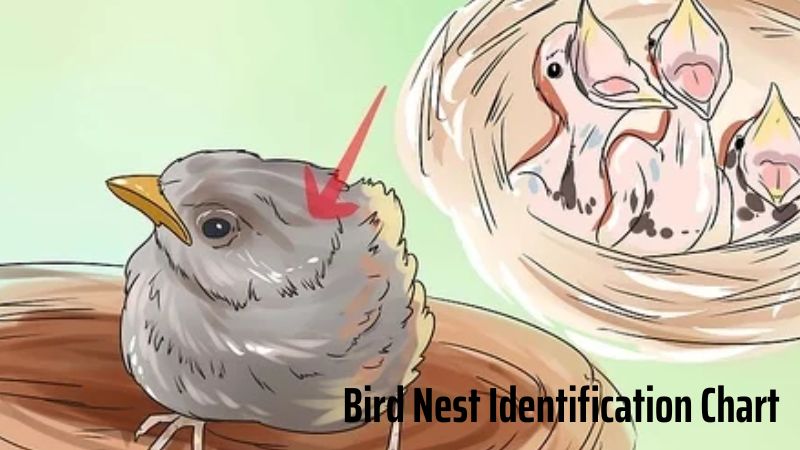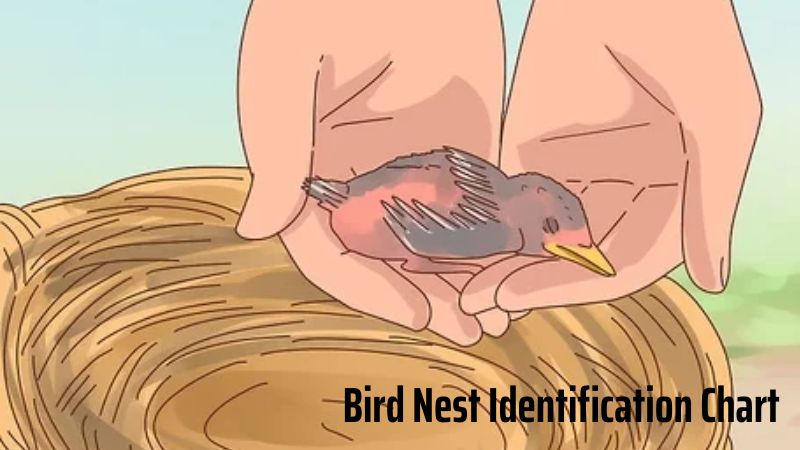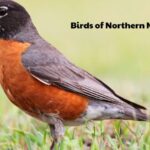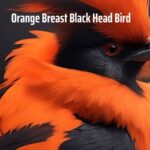Birds
Bird Nest Identification Chart: How to Recognize and Differentiate Nest Types
A bird nest identification chart is an essential resource for anyone interested in avian biology and behavior. This chart provides a comprehensive guide to the various types of bird nests, detailing their shapes, sizes, and construction materials.
By using such a chart, enthusiasts and researchers alike can better understand and recognize the nesting habits of different bird species, enriching their knowledge and appreciation of the natural world, let’s explore with Bird 04 now!
Components of a Bird Nest Identification Chart
Nest Location
- In Trees: Nests can be found in various types of trees, often placed at different heights on branches.
- On the Ground: Some birds build their nests in ground depressions, within hollows, or under bushes for added protection.
- Other Locations: Nests may also be found on cliffs, or within man-made structures like bridges, buildings, or streetlights.
Shape and Size
- Shapes: Nests vary in form, from round or oval to cup-shaped or pouch-like structures.
- Size: The size of a nest can range from small, delicate forms to large, elaborate constructions, depending on the species.
Materials Used
- Natural Materials: Common materials include twigs, leaves, moss, feathers, mud, and spider silk.
- Other Materials: Some birds may also use human-made materials like string or fabric in their nests.
Nest Structure
- Open or Enclosed: Nests can be open or fully enclosed with a roof.
- Compartmentalization: Some nests feature multiple compartments or specialized entryways, depending on the bird’s needs and behaviors.

Common Types of Bird Nest Identification Charts
Image Charts
- Image charts offer detailed visual depictions of bird nests, showcasing the diversity in nest shapes, sizes, and construction techniques. These charts typically feature high-quality photos or illustrations of various nest types, from simple ground nests to intricately woven tree nests.
- They highlight the similarities and differences between nests by focusing on key features like materials (twigs, leaves, feathers), construction styles (open or enclosed), and locations. This makes them particularly useful for comparing nest types side by side.
- Image charts are especially beneficial for visual learners and bird enthusiasts who want to quickly identify nests based on sight alone. They allow for instant recognition by providing a clear, visual reference for each type of nest, making it easier to distinguish between species.
Structural Diagram Charts
- Structural diagram charts delve deeper into the architectural details of bird nests. These diagrams typically illustrate both the internal and external structure of nests, offering a clear representation of how nests are built and organized.
- Key identification features are emphasized, such as entry points, the number of compartments, and the overall design of the nest. These charts help in understanding the complexity behind nest construction, including how birds arrange materials for insulation, protection, and support.
- Structural diagram charts are invaluable for those looking to study the architectural intricacies of bird nests and how specific species design their homes to suit their needs and environments.
Classification Charts
- Classification charts organize bird nests according to various ecological and structural criteria. These charts classify nests based on their location (in trees, on the ground, in cliffs, or within human-made structures), materials used (such as twigs, grasses, mud, or even human debris), and their shape (round, cup-shaped, dome-shaped, or hanging).
- By offering a clear, systematic breakdown of nest types, these charts help identify nests based on where they are found and how they are constructed. They provide a practical tool for both field researchers and casual bird watchers who are trying to categorize nests in a given habitat.
- Classification charts also aid in understanding the ecological adaptations of different species, revealing how nests vary not only by bird type but also by environmental conditions, predator threats, and available resources.
Applications of Bird Nest Identification Charts
In Scientific Research
- Bird nest identification charts play a crucial role in studying the nesting behaviors of different species. By analyzing the locations where birds choose to nest and the materials they use, researchers can gain insights into their ecological preferences and adaptive strategies.
- These charts are also essential for assessing biodiversity. By identifying nests in various environments, scientists can determine the range of species present, track population trends, and measure the impact of environmental changes. This data can contribute to broader ecological studies, enhancing our understanding of ecosystems and species interactions.
In Conservation
- Bird nest identification charts are valuable tools in conservation efforts, especially for identifying and protecting rare or endangered species. Certain species may have distinct nesting habits or nest structures that set them apart, and recognizing these nests can help conservationists monitor vulnerable populations without disturbing the birds directly.
- Additionally, these charts allow for the evaluation of habitat health. The presence or absence of nests in a given area can indicate the quality of the environment and whether it is suitable for supporting bird populations. Monitoring nest materials and locations also helps conservationists detect environmental threats, such as pollution or habitat degradation.
In Education
- For educators, bird nest identification charts are excellent resources for teaching students about nature and wildlife. By exploring different nest types, students can develop a deeper appreciation for bird behavior, habitat selection, and species diversity. This hands-on learning approach fosters curiosity and a connection to the natural world.
- These charts also help students cultivate important observation and analytical skills. By comparing and contrasting nests, students learn to identify key features, interpret ecological data, and make informed conclusions about the species and environments they study. This enhances critical thinking and promotes a deeper understanding of biology and ecology.
Conclusion
In conclusion, a bird nest identification chart serves as an invaluable tool for both amateur bird watchers and seasoned researchers. It aids in understanding the diversity of nesting habits, offering insight into the species, environment, and behaviors of birds.
With its practical applications in research, conservation, and education, such a chart enhances our appreciation for the natural world and the role birds play within it.





